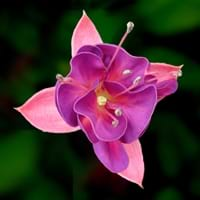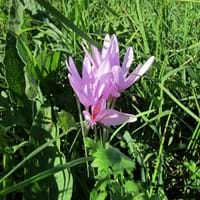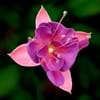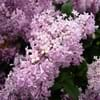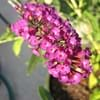Life Span
Perennial
Perennial
Type
Tender Perennial
Bulb or Corm or Tuber
Origin
Caribbean
Europe, Turkey, Central Asia, Western Asia
Types
Fuchsia Decidua, Fuchsia Fulgens, Fuchsia Splendens, Fuchsia Microphylla
Colchicum cupanii, Colchicum alpinum
Number of Varieties
Not Available
Habitat
Forest edges, Woods
Fields, meadows, Rocky areas, Shaded sites, Woodlands
USDA Hardiness Zone
9-10
Not Available
AHS Heat Zone
10-9
Not Available
Sunset Zone
16, 17, 23, 24
21,22
Habit
Arching/Fountain-shaped
Clump-Forming
Flower Color
Orange Red
White, Yellow, Purple, Violet
Flower Color Modifier
Not Available
Bicolor
Fruit Color
Not Available
Not Available
Leaf Color in Spring
Purple, Dark Green
Green
Leaf Color in Summer
Purple, Dark Green
Light Green
Leaf Color in Fall
Purple, Dark Green
Several shades of Green
Leaf Color in Winter
Unknown
Light Green
Leaf Shape
Long Linear
Long Linear
Plant Season
Spring, Summer, Fall, Winter
Spring, Fall, Winter
Sunlight
Full Sun, Partial Sun, Partial shade
Full Sun, Partial Sun
Growth Rate
Medium
Medium
Type of Soil
Clay, Loam, Sand
Loam
The pH of Soil
Acidic, Neutral
Acidic, Neutral
Soil Drainage
Average
Well drained
Bloom Time
Indeterminate
Early Spring, Late Summer, Early Fall, Fall, Late Fall, Winter, Late Winter
Tolerances
Drought
Drought
Where to Plant?
Container, Ground, Pot
Container, Ground, Pot
How to Plant?
Seedlings, Stem Planting, Transplanting
Divison, Seedlings
Plant Maintenance
Medium
Low
Watering Requirements
Requires regular watering
Do Not over Water, Medium, Needs less watering, Never Over-water, Requires regular watering, Water less during winter
In Summer
Lots of watering
Ample Water
In Spring
Moderate
Less Watering
In Winter
Average Water
Less Watering
Soil pH
Acidic, Neutral
Acidic, Neutral
Soil Type
Clay, Loam, Sand
Loam
Soil Drainage Capacity
Average
Well drained
Sun Exposure
Full Sun, Partial Sun, Partial shade
Full Sun, Partial Sun
Pruning
Prune in spring, Prune lower leaves, Remove dead or diseased plant parts, Remove deadheads, Remove shoots
Remove damaged leaves, Remove dead leaves, Remove dead or diseased plant parts, Remove shoots
Fertilizers
All-Purpose Liquid Fertilizer
fertilize in growing season, Less fertilizing
Pests and Diseases
Rhizoctonia Root Rot, Rust
Not Available
Plant Tolerance
Drought
Drought
Flower Petal Number
Single
Single, Double
Foliage Texture
Medium
Coarse
Foliage Sheen
Matte
Not Available
Attracts
Hummingbirds
Bees, Butterflies
Allergy
Asthma, Hay fever
Kidney Disease, Low blood pressure, Stomach pain, Toxic, Vomiting
Aesthetic Uses
Showy Purposes
Landscape Designing
Beauty Benefits
Not Available
No Beauty Benefits
Environmental Uses
Air purification
Air purification, No fertilizer, pesticides, or herbicides needed, Prevent Soil Erosion
Medicinal Uses
Not Available
anti-cancer, anti-inflammatory, Diarrhea, Diuretic, Rheumatism
Part of Plant Used
Flowers, Fruits
Flowers, Leaves
Other Uses
Not Available
Employed in herbal medicine, Showy Purposes, Used as Ornamental plant, Used for its medicinal properties
Used As Indoor Plant
Yes
Yes
Used As Outdoor Plant
Yes
Yes
Garden Design
Bedding Plant, Container, Feature Plant, Foundation, Hedges, Tropical
Alpine, Container, Cutflower, Foundation, Lawns and Turf, Mixed Border, Rock Garden / Wall, Wildflower
Botanical Name
FUCHSIA triphylla
COLCHICUM
Common Name
Fuchsia
Colchicum
In Hindi
फ्यूशिया
colchicum
In German
Fuchsie
colchicum
In French
Fuchsia
colchique
In Spanish
Fucsia
Colchicum
In Greek
φουξία
Colchicum
In Portuguese
Fúcsia
Colchicum
In Polish
Fuksja
Colchicum
In Latin
Fuchsia
Colchicum
Phylum
Magnoliophyta
Magnoliophyta
Class
Dicotyledonae
Liliopsida
Family
Onagraceae
Liliaceae
Clade
Angiosperms, Eudicots, Rosids
Angiosperms, Monocots
Tribe
Not Available
Not Available
Subfamily
Not Available
Wurmbaeiodeae
Season and Care of Fuchsia and Colchicum
Season and care of Fuchsia and Colchicum is important to know. While considering everything about Fuchsia and Colchicum Care, growing season is an essential factor. Fuchsia season is Spring, Summer, Fall and Winter and Colchicum season is Spring, Summer, Fall and Winter. The type of soil for Fuchsia is Clay, Loam, Sand and for Colchicum is Loam while the PH of soil for Fuchsia is Acidic, Neutral and for Colchicum is Acidic, Neutral.
Fuchsia and Colchicum Physical Information
Fuchsia and Colchicum physical information is very important for comparison. Fuchsia height is 45.70 cm and width 45.70 cm whereas Colchicum height is 7.60 cm and width 7.60 cm. The color specification of Fuchsia and Colchicum are as follows:
Fuchsia flower color: Orange Red
Fuchsia leaf color: Purple and Dark Green
Colchicum flower color: White, Yellow, Purple and Violet
- Colchicum leaf color: Green
Care of Fuchsia and Colchicum
Care of Fuchsia and Colchicum include pruning, fertilizers, watering etc. Fuchsia pruning is done Prune in spring, Prune lower leaves, Remove dead or diseased plant parts, Remove deadheads and Remove shoots and Colchicum pruning is done Remove damaged leaves, Remove dead leaves, Remove dead or diseased plant parts and Remove shoots. In summer Fuchsia needs Lots of watering and in winter, it needs Average Water. Whereas, in summer Colchicum needs Ample Water and in winter, it needs Less Watering.
